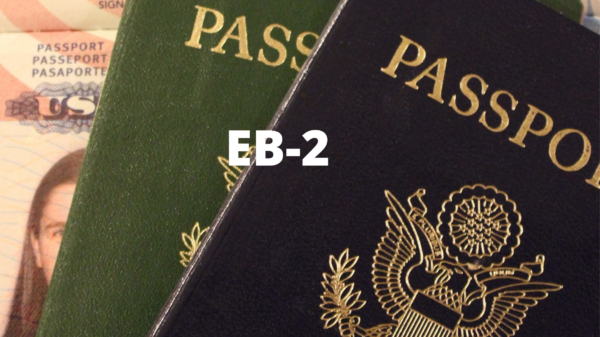Photo: These Indian American women share breakfast, camaraderie and companionship at a U.S. retirement home focused on Indian culture.
TAVARES, Fla.–“I am domesticated, broken, tamed,” Arun Pancholi said. But as he speaks, his cheeks break into playful dimples. With a baseball hat stylishly cocked on his head, he looks like a mischievous middle-schooler. “I am on the inside,” he says with a twinkle in his eye, “I am done for.”
“Inside” is the Indian American retirement community of Shantiniketan in Tavares, Fla., where Pancholi has been living with his wife Usha for the last two years.
“Women adjust better to this place; they don’t have to cook any more,” he added. “Men have a hard time. They have to find their niche.”
Pancholi has found his niche. He volunteers at a local hospital. “There is a great need to help people,” he said. “Not only at Shantiniketan, but also in the town. People need transportation to medical facilities or other help.”
Valuing Their Independence
After a successful career in marketing in Ohio, where Pancholi lived in a 4,000-5,000 sq. ft. suburban home, it is a challenge to adjust to a 1,000 sq. ft. condo in a retirement community.
But the choices for him and Usha were to move close to their daughter in New Jersey, go to India, or come to Shantiniketan. After 40 years in the United States, they knew they could not adapt to life in their native land.
Like many Indians of their generation, the Pancholis are modern people. They were among the first wave of Indian immigrants, many of whom came to the U.S. as students and later acquired green cards.
They were the first generation to also reject the traditional lifestyles of their parents and grandparents. As a result, they do not expect to live with their children; they value their independence too fiercely.
“Every ethnic and religious group has retirement homes in America. Why not us,” asked Iggy Ignatius, Shantiniketan’s founder?
Although some media stories have called Shantiniketan a Hindu community, it is as secular as India is, with a prayer room that accommodates all beliefs, including Islam, Christianity and Jainism.
While Ignatius is a Christian, he also belongs to the Brahma Kumaris, a sect that believes in purifying the soul through meditation and positive thinking. Trained as an engineer, he got an MBA from the University of Illinois, became a marketing consultant and got into computers in 1974, eventually forming a successful IT company.
Like many Indians who came to the U.S. in the 1960s and ’70s, Ignatius realized he was too assimilated into American life to adjust to India. Yet he longed for his own community. ““We are like salmon that return to the stream to die,” he said. “At the end stage of our lives, we want to be surrounded by our own kind.”
The name Shantiniketan, which means “abode of peace,” is taken from the name of the art-centered university that Ravindranath Tagore, India’s only Nobel laureate in literature, founded in a natural setting outside of Calcutta in the early 1900s.
“There are 3 million Indian Americans,” Ignatius observed. “Nearly 10 percent or 300,000 are retired. And about one percent of those seek a place like Shantiniketan. So it is definitely a niche community.”
Vegetarian, But Varied Cuisine
The main reason residents come to Shantiniketan is the vegetarian food, he noted.
Continental breakfast includes cereal, milk, toast, tea, and coffee. Lunch consists of two vegetables,daal (stewed lentils), roti (flat bread), rice, and yogurt. Evening meals offer over 30 items from Gujarathi, Punjabi and Maharashtrian regions. Mexican and Italian dishes are also available.
For the monthly price of $250, the meal plan is a bargain. Residents are free to cook non-veg in their own kitchens, as many fish-eating Bengalis do.
Although the Ignatius Company prepares the food, the Shantiniketan residents’ association serves it. The Association, in fact, has a committee for everything, from management to food to transportation to safety and health. The arrangement can mean endless squabbles.
“It is definitely like living in an extended family,” Arun Pancholi said. “Individually, Indians are great to work with, but communally, they can be difficult.”
Shantiniketan is modeled on the co-housing developments originated in Scandinavia. For its resident group of retired doctors and engineers, Shantiniketan’s condos are quite affordable at $250,000–even though on can get a four- or five-bedroom house in Tavares for that amount.
One attraction of a community like Shantiniketan is that it has 55-plus zoning, Ignatius says, so residents do not have to pay property taxes for schools.
His model has been so successful that he has been invited to open homes in California, Washington D.C., Dallas, Texas, even overseas, in places such as Malaysia, England, Australia, and New Zealand.
What about low-income Indian-Americans? A plan for a subsidized ashram is underway, Ignatius replies.
Silicon Valley’s Priya Living
Alternatively, for aging Indian Americans, Priya Living, in the heart of Silicon Valley, offers one-bedroom rental accommodations for about $2,500 a month. Every year, there is an increase of about eight percent.
While that’s reasonable by Silicon Valley standards, Pravin Thakkar, who moved here in April from Columbus, Ind., worries about his payments. He had a successful career in management in Indiana, but his rental income from a condo there is low.
Cost is not Thakkar’s only pre occupation. He also worries about his health, about the possibility of having surgeries without anyone to help him. He finds his loneliness devastating.
At age 66, Thakkar retired after his wife passed away. He could not bear to live alone in the Midwest. But now he regrets his emotional decision. At least his work kept him occupied, he said.
Never interested in spirituality, he said it is hard to find solace in it now. He tried to live alone in Cupertino near his daughter, but it was expensive. So he moved to Priya.
“My daughter tells me I was unfortunate to be so fortunate all my life,” Thakkar commented. “I had a happy marriage, a happy life. I never had to face the meaning of life.”
“The people here are good company,” he addeds with a tinge of wistfulness.
Kottarathil Venugopal, 79, also speaks wistfully about his 48 years in the U.S. A professor of anesthesiology in Chicago, he started a private practice after the university failed to offer him tenure. He had a successful career but he could not get close to the Indian community there. Winters were cold; distances large. His life was filled with work.
“At Priya Living,” he said, “medical facilities are close by. I had a heart procedure at Stanford.”
Priya’s Women Attuned to Life Transitions
The women at Priya seem more adapted to communal living than men do.
Former librarian Uma Jindal, 84, is a “snowbird” who comes to California every winter from her condo in Edmonton, Canada, to be near her daughter.
One gets the sense from strong women like Jindal that they are fiercely independent and determined to avoid burdening anyone. They have used the philosophical underpinnings of their culture to prepare themselves for life’s transitions.
An advantage of Priya Living is that it also rents to a small number of young Silicon Valley workers, providing much-needed generational diversity. Also, in addition to yoga classes and other activities offered in-house, the residents can access community services, such as food from nearby restaurants or activities at the Santa Clara Senior Center.
Where to Take Our Last Breaths
Arun Paul, the founder of Priya, said, I formed Priya because, even though I was born in the U.S., I feel it too; I am cut off from my larger family and community.”
In Priya’s sunny but breezy courtyard, a group of residents mix flaked rice, peanuts, and spices to make bhel, an Indian street food, while showing a warm display of camaraderie and companionship.
The scene recalls words from a 1961 song a man sings to his country:
Hum jahaan paida hue
us jagah pe hi nikale dam
(“Where I was created,
There I will take my last breath.”)
Most of us no longer have the luxury of taking our last breaths in our birthplaces, but Shantiniketan and Priya Living offer a very good simulation.
Sarita Sarvate wrote a longer version of this article for India Currents supported by a fellowship from New America Media and the Gerontological Society of America, sponsored by AARP.












